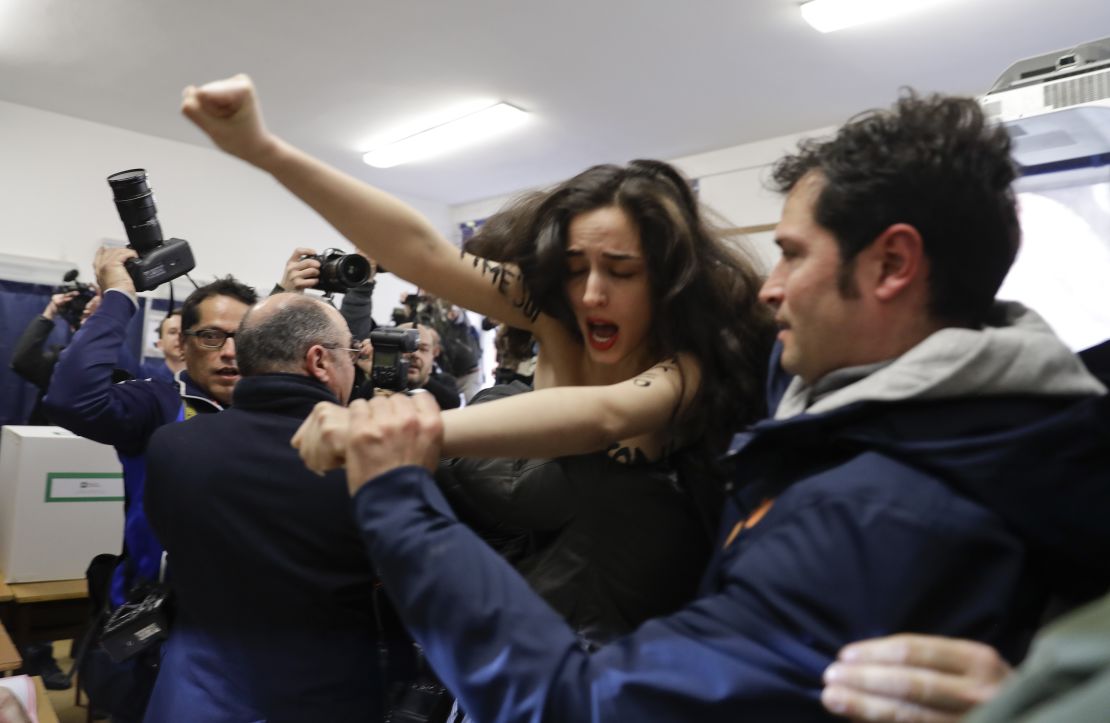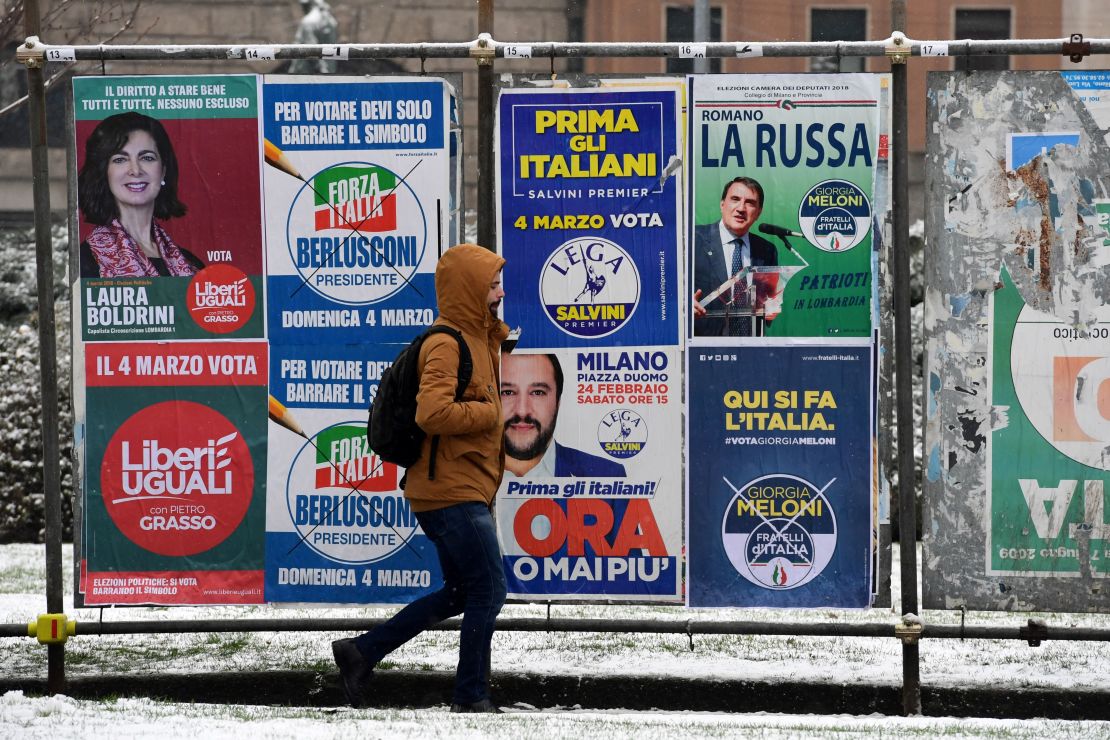One of Europe’s most critical elections of the year is underway, with Italians voting in a divisive parliamentary election that is likely to push the country into a state of political paralysis with no outright winner in sight.
By 7pm local time, the turnout was 58.5%, compared to 46.3% the last time Italy held general elections in 2013, although then the electorate had two days to vote.
Changes to the election system to prevent fraud also meant long queues across the country. Polls close at 11pm Italian time.

When media billionaire and four-time Italian Prime Minister Silvio Berlusconi arrived to vote, he was interrupted by a topless protester from France belonging to the “Femen” feminist group. She stood topless with the words “Berlusconi scaduto” written across her breast, which translates as, “Berlusconi has passed his sell-by date.”
The 81-year-old has constructed a center-right coalition between his Forza Italia party and that of Matteo Salvini’s far-right Northern League, along with the neo-fascist Brothers of Italy.
The final pre-election poll of voters’ intentions had suggested this bloc could end up with the largest grouping in Parliament.
Matteo Renzi, the center-left reformer who stepped aside in 2016 after the failure of a controversial constitutional referendum, is also a contender as leader of the center-left Democratic Party (PD). The final opinion poll had the party trailing at 22.8%.
Analysts do not expect any party or alliance to earn an outright majority, meaning Italy could be plunged into months of further political deadlock that could have broader implications for Europe.
Europe on alert
The state of the economy and security remained key issues ahead of the ballot, but one issue dominated this election – immigration.
Right-wing parties pushed an anti-immigration agenda. The Northern League has advocated for mass expulsions and pledged to put “Italians first.”
The narrative around immigration took a darker turn after a man linked with neo-fascist political parties apparently went on a shooting rampage targeting African migrants in the town of Macerata. The incident fueled serious political debate about how the country is reconciling its fascist past.
The poll is being closely scrutinized by European leaders who are concerned by the increasingly euro-skeptical sentiment and fearful of any instability in the Eurozone’s third-largest economy.
“This political uncertainty, government instability and the prospect of repeated elections configure to a ‘perfect storm’ which could harm one of the main European democracies and further destabilize an already weak continental alliance,” Fabio Bordignon, a political scientist at the University of Urbino Carlo Bo, told CNN ahead of the vote.
Related: Can anything save Italy from a return to fascism?
How the vote works

Adding to the chaos of Italian politics, a new (and untested) hybrid electoral method – which encourages coalitions – is in play this time round.
The new system combines a first-past-the-post (FPTP) approach with proportional representation (PR). FPTP means the candidate who gets the most votes in a constituency wins a seat in Parliament; PR means that additional seats will be allotted to parties based on the proportion of votes they win nationwide.
Of the 630 seats in lower house of Parliament – the Chamber of Deputies – 232 will be elected through FPTP, and 386 through PR. The remaining 12 seats are determined by overseas constituencies. A similar split will be used for Italy’s upper house – the Senate – with 102 members elected by FPTP and 207 through PR.
Related: Rome’s sad decline sums up Italy’s problems
With an unproven new system in place and a bloc of undecided voters, many observers believe Italy is headed toward a hung Parliament.
“The most likely outcome is that no coherent parliamentary majority will exist after March 4,” Paolo Chiocchetti, fellow of the Robert Schuman Institute of European Affairs at the University of Luxembourg.
“In this case, it is likely that the (Paolo) Gentiloni government will continue to sit in a provisional capacity while parties enter long discussions on whether (to build) an ‘all-party’ technical government limited to a set of specific reforms or call new general elections,” he said.
This story has been corrected to reflect the Democratic Party’s standing in the final poll of polls published by YouTrend on February 16, 2018.






